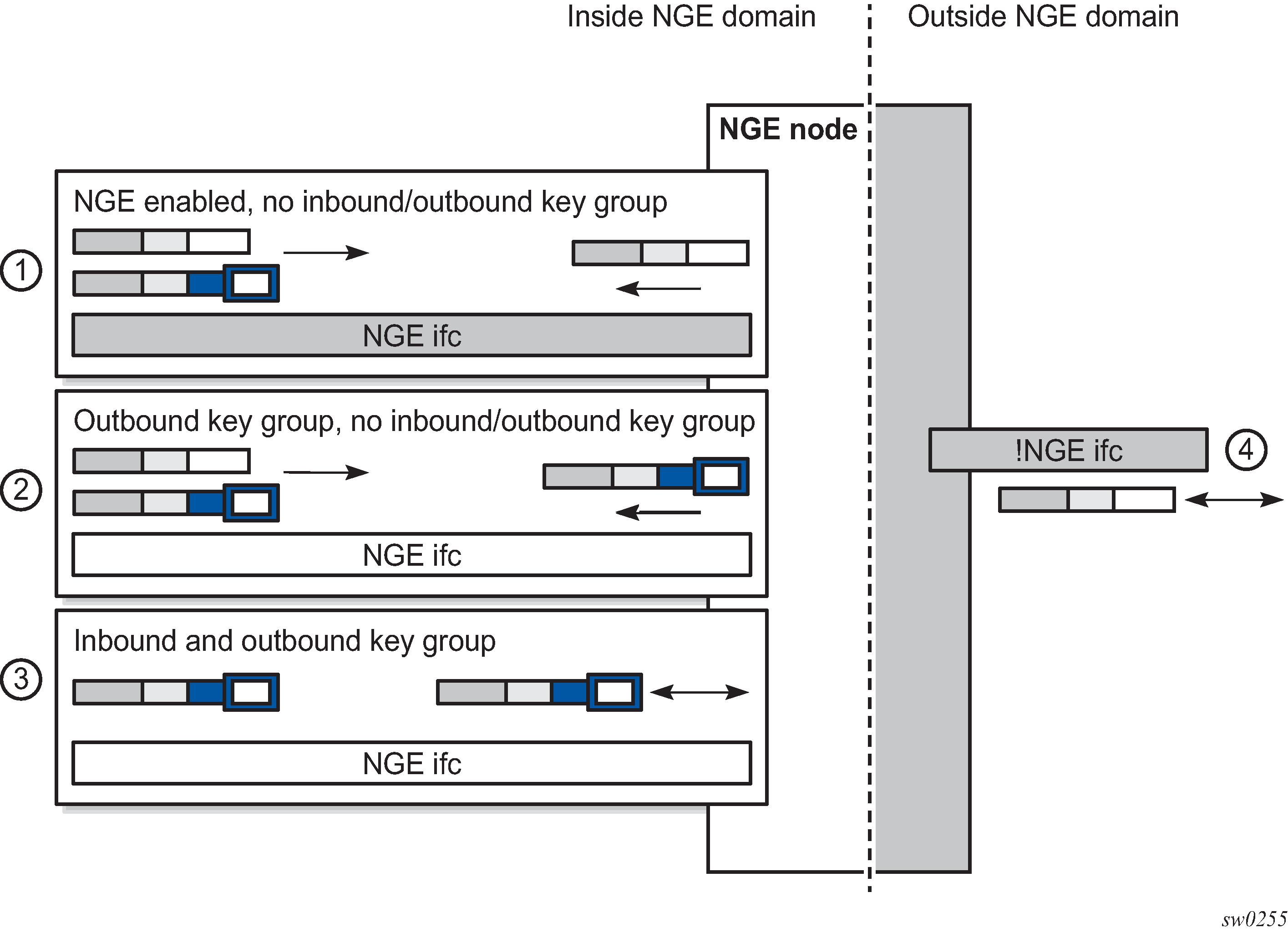An NGE domain is a group of nodes whose router interfaces in the base routing context (GRT) are enabled for router interface NGE. An interface without router interface NGE enabled is considered to be outside the NGE domain. NGE domains use only one key group when the domain is created; however, two key groups may be active at when if some links within the NGE domain are in transition from one key group to the other.
Figure: Inside and outside NGE domains illustrates the NGE domain concept. Table: Inside and outside NGE domains configuration scenarios describes the three configuration scenarios inside the NGE domain.

Key |
Description |
|---|---|
1 |
NGE enabled, no inbound/outbound key group Outbound packets are sent without encrypting; inbound packets can be NGE-encrypted or clear text |
2 |
Outbound key group, no inbound key group Outbound packets are encrypted using the interface key group if not already encrypted; inbound packets can be NGE-encrypted or clear text |
3 |
Inbound and outbound key group Outbound packets are encrypted using the interface key group if not already encrypted; inbound packets must be encrypted using the interface key group keys |
4 |
Outside the NGE domain, the interface is not configured for NGE; any ESP packets are IPsec packets |
A router interface is considered to be inside the NGE domain when it has been configured with group-encryption on the interface. When group-encryption is configured on the interface, the router can receive unencrypted packets or NGE-encrypted packets from any configured key group on the router, but any other type of IPsec-formatted packet is not allowed. If an IPsec-formatted packet is received on an interface that has group-encryption enabled, it does not pass NGE authentication and is dropped. Therefore, IPsec packets cannot exist within the NGE domain without first being converted to NGE packets. This conversion requirement delineates the boundary of the NGE domain and other IPsec services.
When NGE router interface encryption is enabled and only an outbound key group is configured, the interface can receive unencrypted packets or NGE-encrypted packets from any configured key group on the router. All outbound packets are encrypted using the outbound key group if the packet was not already encrypted further upstream in the network.
When NGE router interface encryption has been configured with both an inbound and outbound key group, only NGE packets encrypted with the key group security association can be sent and received over the interface.
When there is no NGE router interface encryption, the interface is considered outside the NGE domain where NGE is not applied.
See the ‟NGE Packet Overhead and MTU Considerations” section in the 7450 ESS, 7750 SR, 7950 XRS, and VSR Services Overview Guide for MTU information related to enabling NGE on a router interface.